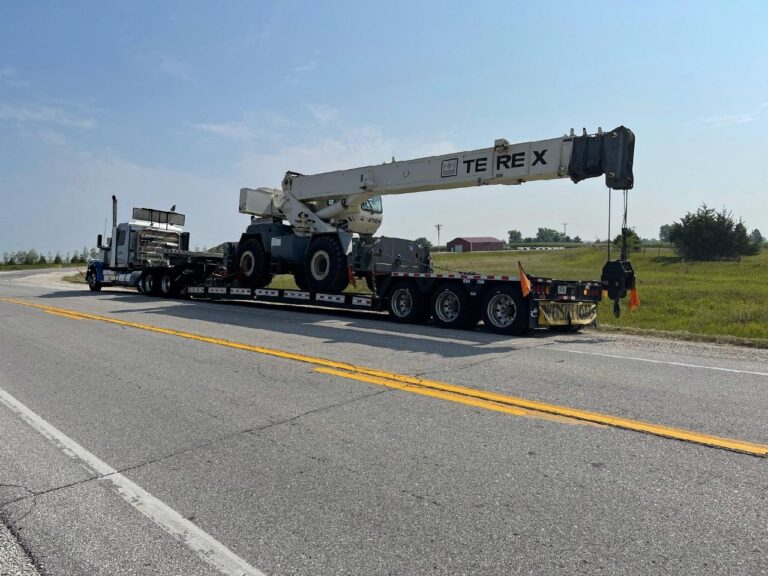How to Safely Haul Heavy Equipment

William Thomas / January 2021
Transporting heavy equipment from one state to another might seem like a straightforward process to an outsider, and some might even see it as easy. But fleet operators, managers, manufacturers, dealers, and shippers know better. Moving heavy equipment requires detailed and meticulous planning, consideration, and coordination to ensure that everything moves smoothly. The carrier must consider the specifications of that particular shipment, the conditions of the designated route, their area of operation, among other factors. That said, having a set of loading, shipping, and offloading protocol when shipping heavy equipment is not only the best way-it’s the only way. To guarantee maximum productivity and minimize costs, perhaps the first and most crucial step is to find a professional heavy hauling company you can trust. They will guide you on choosing the right trailer type for transport, what is required and what to expect during the shipping process. Here are three tips from the experts on how to safely heavy equipment to their destinations.
Choose the Right Trailer for Transporting Your Load

“Remember that a load inspection must be done on the trailer before the trailer hits the road. “
Sure, a trailer might appear large enough to ship a particular piece of equipment. But that does not mean that it is the right type. And if it is not, you might be in for ugly incidences such as accidents, damages, and injuries. It might also lead to premature wear and tear on your tires or, even worst serious structural damages to the trailer itself. That said, a safe heavy equipment hauling job starts with identifying the right trailer for your shipment. The most common trailer types used to transport heavy equipment include:
- • Flatbed Trailers
- • Step-Deck Trailers
- • Removable Gooseneck Trailers (RGN)
- • Double Drop Deck Trailers
- • Expandable Drop-Deck Trailers
- • Expandable RGN Trailers
Note that each trailer has its own specifications and safety ratings. For instance, its specific capacity dictates the maximum stress and, therefore, the type of load it handles safely. Consequently, you must pay attention to your load dimensions in relation to your trailer capacity and safety ratings. Remember that a load inspection must be done on the trailer before the trailer hits the road. Ensure that the trailer is in perfect working condition. Check the tires, lights, brakes, axles, hydraulic hoses, and axles and ensure they are all working well.
Transport Your Heavy Equipment Now!
Heavy Equipment Transport is always available for a quote. Fill out the form or give us a call now! (888) 730-2951
Properly Loading and Securing Heavy Equipment for Safe Delivery
After choosing the right trailer, you can now get to shipment loading and distribution. Note that incorrect loading on one of the leading causes of truck accidents, cargo damages, and losses either during hauling, loading, or offloading. Ensure that your shipment is well balanced and distributed on the trailer to keep it from tipping which might make it difficult for the driver to handle the tractor while hauling the cargo. Additionally, the shipment should be well secured to keep it from shifting during the process and resultantly falling off the trailers. If you are shipping such loads as construction equipment or tractors, you should secure them as guided by the Federal Motor Carrier Safety Administration.
Knowing The Local Regulatory Requirements and Trucking Laws
Be sure to check out the laws, regulations, and restrictions governing heavy equipment transport of every state your shipment will be passing. Keep in mind that these laws vary as you move from one border to another. That said, you should never assume that the laws governing your departure state are similar to those at the delivery point. If you are trucking oversized loads, it is crucial that acquire all the necessary permits well in advance to avoid last-minute rush and panic. It is also essential to find out if there are any other special requirements for your load, such as pilot cars, escort, or specific transport days and times. Paying attention to all these requirements will guarantee you a safe, productive, and stress-free shipping and delivery operation.